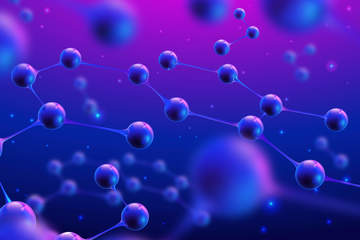We found 105 results that contain "data science"
Posted on: #iteachmsu


Data Science in Digital Marketing
The digital revolution is now sweeping small towns and villages perhaps driven by increased accessibility at affordable data costs? The whole world is in our hands and the increase in the usage of digital in rural India, where more than two-thirds of active internet users are present is a great opportunity and a win-win situation for both. They are trying to meet their entertainment and communication needs and we can help them provide the best of service in addition to winning their hearts and pocket.
ASSESSING LEARNING
Posted on: #iteachmsu


Science and technology
Science and technology is a topic that encompasses science, technology, and the interactions between the two. Science is a systematic enterprise that builds and organizes knowledge in the form of explanations and predictions about nature and the universe. Technology is the collection of techniques, methods or processes used in the production of goods or services or in the accomplishment of objectives, such as scientific investigation, or any other consumer demands.
Posted on: Educational outcomes.


Education sciences edit 2
Education sciences,[1] also known as education studies, education theory, and traditionally called pedagogy,[2] seek to describe, understand, and prescribe education policy and practice. Education sciences include many topics, such as pedagogy, andragogy, curriculum, learning, and education policy, organization and leadership. Educational thought is informed by many disciplines, such as history, philosophy, sociology, and psychology.
edit 1
Faculties, departments, degree programs, and degrees on education sciences are often called simply faculty of education etc.[3] It is likewise still common to say she is studying education, which is only very rarely expressed as studying education science(s) and was traditionally called studying pedagogy (in English) in most European countries. Similarly, educational theorists may be known as pedagogues depending on the country.
edit 1
Faculties, departments, degree programs, and degrees on education sciences are often called simply faculty of education etc.[3] It is likewise still common to say she is studying education, which is only very rarely expressed as studying education science(s) and was traditionally called studying pedagogy (in English) in most European countries. Similarly, educational theorists may be known as pedagogues depending on the country.
DISCIPLINARY CONTENT
Posted on: QA groups


Data communications
Data communications refers to the transmission of this digital data between two or more computers and a computer network or data network is a telecommunications network that allows computers to exchange data. The physical connection between networked computing devices is established using either cable media or wireless media. The best-known computer network is the Internet.
Posted on: QA groups


Data communications
Data communications refers to the transmission of this digital data between two or more computers and a computer network or data network is a telecommunications network that allows computers to exchange data. The physical connection between networked computing devices is established using either cable media or wireless media. The best-known computer network is the Internet.
Posted on: #iteachmsu


How Iceland hammered COVID with science
Driving along Reykjavik’s windswept roads on a cold March morning, Kári Stefánsson turned up the radio. The World Health Organization had just announced that an estimated 3.4% of people infected with SARS-CoV-2 would die — a shockingly high fatality rate, some 30 times larger than that for seasonal influenza.
There was a problem with that estimate, however: it was based on reported cases of COVID-19, rather than all cases, including mild and asymptomatic infections. “I couldn’t figure out how they could calculate it out without knowing the spread of the virus,” recalls Stefánsson, who is the founder and chief executive of deCODE genetics, a human-genomics company in Reykjavik. He became convinced that making sense of the epidemic, and protecting the people of Iceland from it, would require a sweeping scientific response.
There was a problem with that estimate, however: it was based on reported cases of COVID-19, rather than all cases, including mild and asymptomatic infections. “I couldn’t figure out how they could calculate it out without knowing the spread of the virus,” recalls Stefánsson, who is the founder and chief executive of deCODE genetics, a human-genomics company in Reykjavik. He became convinced that making sense of the epidemic, and protecting the people of Iceland from it, would require a sweeping scientific response.
Posted on: #iteachmsu


Business Intelligence and Data Science
Business Intelligence and Data Science are two of the most recurring terms in the digital era. While both of them involve the use of data, they are totally different from one another. Data Science is the bigger pool containing greater information, BI can be thought of as a part of the bigger picture.
What is Business Intelligence?
Business Intelligence is a process of collecting, integrating, analyzing, and presenting the data. With Business Intelligence, executives and managers can have a better understanding of decision-making. This process is carried out through software services and tools.
Using Business Intelligence, organizations are able to several strategic and operational business decisions. Furthermore, BI tools are used for the analysis and creation of reports. They are also used for producing graphs, dashboards, summaries, and charts to help the business executives to make better decisions.
What is Business Intelligence?
Business Intelligence is a process of collecting, integrating, analyzing, and presenting the data. With Business Intelligence, executives and managers can have a better understanding of decision-making. This process is carried out through software services and tools.
Using Business Intelligence, organizations are able to several strategic and operational business decisions. Furthermore, BI tools are used for the analysis and creation of reports. They are also used for producing graphs, dashboards, summaries, and charts to help the business executives to make better decisions.
Authored by: Rupali
Assessing Learning
Posted on: #iteachmsu


computer science
Computer science focuses on the development and testing of software and software systems. It involves working with mathematical models, data analysis and security, algorithms, and computational theory. Computer scientists define the computational principles that are the basis of all software.
Posted by: Super Admin
Posted on: #iteachmsu


Computer Science
Computer science is the study of computers and computational systems. It is a broad field which includes everything from the algorithms that make up software to how software interacts with hardware to how well software is developed and designed.
Some common job titles for computer scientists include:
Computer Programmer
Information Technology Specialist
Data Scientist
Web Optimization Specialist
Database Administrator
Systems Analyst
Web Developer
https://projects.invisionapp.com/d/main?origin=v7#/console/20294675/474484363/inspect
Some common job titles for computer scientists include:
Computer Programmer
Information Technology Specialist
Data Scientist
Web Optimization Specialist
Database Administrator
Systems Analyst
Web Developer
https://projects.invisionapp.com/d/main?origin=v7#/console/20294675/474484363/inspect
Authored by: Shweta
Assessing Learning
Posted on: #iteachmsu

Data availability
Just over 3 billion people are online with an estimated 17 billion connected devices or sensors. [9] That generates a large amount of data which, combined with decreasing costs of data storage, is easily available for use. Machine learning can use this as training data for learning algorithms, developing new rules to perform increasingly complex tasks.
Just over 3 billion people are online with an estimated 17 billion connected devices or sensors. That generates a large amount of data which, combined with decreasing costs of data storage, is easily available for use. Machine learning can use this as training data for learning algorithms, developing new rules to perform increasingly complex tasks.
Just over 3 billion people are online with an estimated 17 billion connected devices or sensors. [9] That generates a large amount of data which, combined with decreasing costs of data storage, is easily available for use. Machine learning can use this as training data for learning algorithms, developing new rules to perform increasingly complex tasks.
Just over 3 billion people are online with an estimated 17 billion connected devices or sensors. That generates a large amount of data which, combined with decreasing costs of data storage, is easily available for use. Machine learning can use this as training data for learning algorithms, developing new rules to perform increasingly complex tasks.
Just over 3 billion people are online with an estimated 17 billion connected devices or sensors. That generates a large amount of data which, combined with decreasing costs of data storage, is easily available for use. Machine learning can use this as training data for learning algorithms, developing new rules to perform increasingly complex tasks.
Just over 3 billion people are online with an estimated 17 billion connected devices or sensors. [9] That generates a large amount of data which, combined with decreasing costs of data storage, is easily available for use. Machine learning can use this as training data for learning algorithms, developing new rules to perform increasingly complex tasks.
Just over 3 billion people are online with an estimated 17 billion connected devices or sensors. That generates a large amount of data which, combined with decreasing costs of data storage, is easily available for use. Machine learning can use this as training data for learning algorithms, developing new rules to perform increasingly complex tasks.
Posted by: Chathuri Super admin..
Posted on: QA groups


Data communications
Data communications refers to the transmission of this digital data between two or more computers and a computer network or data network is a telecommunications network that allows computers to exchange data. The physical connection between networked computing devices is established using either cable media or wireless media. The best-known computer network is the Internet.
Posted by: Super Admin
Posted on: #iteachmsu


What Is Big Data? and How Big Data Works?
Big data:Big data refers to the large, diverse sets of information that grow at ever-increasing rates. It encompasses the volume of information, the velocity or speed at which it is created and collected, and the variety or scope of the data points being covered (known as the "three v's" of big data).
Big data is a great quantity of diverse information that arrives in increasing volumes and with ever-higher velocity.
Big data can be structured (often numeric, easily formatted and stored) or unstructured (more free-form, less quantifiable).
Nearly every department in a company can utilize findings from big data analysis, but handling its clutter and noise can pose problems.
Big data can be collected from publicly shared comments on social networks and websites, voluntarily gathered from personal electronics and apps, through questionnaires, product purchases, and electronic check-ins.
Big data is most often stored in computer databases and is analyzed using software specifically designed to handle large, complex data sets.
How Big Data Works
Big data can be categorized as unstructured or structured. Structured data consists of information already managed by the organization in databases and spreadsheets; it is frequently numeric in nature. Unstructured data is information that is unorganized and does not fall into a predetermined model or format. It includes data gathered from social media sources, which help institutions gather information on customer needs.
Big data can be collected from publicly shared comments on social networks and websites, voluntarily gathered from personal electronics and apps, through questionnaires, product purchases, and electronic check-ins. The presence of sensors and other inputs in smart devices allows for data to be gathered across a broad spectrum of situations and circumstances.
Big data is a great quantity of diverse information that arrives in increasing volumes and with ever-higher velocity.
Big data can be structured (often numeric, easily formatted and stored) or unstructured (more free-form, less quantifiable).
Nearly every department in a company can utilize findings from big data analysis, but handling its clutter and noise can pose problems.
Big data can be collected from publicly shared comments on social networks and websites, voluntarily gathered from personal electronics and apps, through questionnaires, product purchases, and electronic check-ins.
Big data is most often stored in computer databases and is analyzed using software specifically designed to handle large, complex data sets.
How Big Data Works
Big data can be categorized as unstructured or structured. Structured data consists of information already managed by the organization in databases and spreadsheets; it is frequently numeric in nature. Unstructured data is information that is unorganized and does not fall into a predetermined model or format. It includes data gathered from social media sources, which help institutions gather information on customer needs.
Big data can be collected from publicly shared comments on social networks and websites, voluntarily gathered from personal electronics and apps, through questionnaires, product purchases, and electronic check-ins. The presence of sensors and other inputs in smart devices allows for data to be gathered across a broad spectrum of situations and circumstances.
Authored by: Rupali
Posted on: #iteachmsu


The relationship between science and technology
Science, technology and innovation each represent a successively larger category of activities which are highly interdependent but distinct. Science contributes to technology in at least six ways: (1) new knowledge which serves as a direct source of ideas for new technological possibilities; (2) source of tools and techniques for more efficient engineering design and a knowledge base for evaluation of feasibility of designs; (3) research instrumentation, laboratory techniques and analytical methods used in research that eventually find their way into design or industrial practices, often through intermediate disciplines; (4) practice of research as a source for development and assimilation of new human skills and capabilities eventually useful for technology; (5) creation of a knowledge base that becomes increasingly important in the assessment of technology in terms of its wider social and environmental impacts; (6) knowledge base that enables more efficient strategies of applied research, development, and refinement of new technologies.
Posted by: Greg Thomsan
Posted on: #iteachmsu


Development Tools
MSU IT offers a number of valuable tools and services that can help you create an experience that facilitates student success regardless of bandwidth, time zones, or class size. To make an appointment with an instructional technologist, fill out the appointment form located at https://tech.msu.edu/service-catalog/teaching/instructional-design-development/ or e-mail the MSU IT Service Desk at ithelp@msu.edu and request a consultation with Instructional Technology and Development. If you prefer the phone, you can also contact them at (517)432-6200.
Authored by: Berry, R. W. (2009). Meeting the challenges of teaching large online classes: Shifting to a learn100
Posted on: #iteachmsu

Data Science::
Data Science is a comprehensive process that involves preprocessing, analysis, visualization, and prediction. On the other hand, AI is the implementation of a predictive model to forecast future events.
A Data Scientist, on the other hand, helps the company and businesses to make careful data-driven decisions. A Data Scientist is responsible for extracting data using SQL and NoSQL queries, cleaning various anomalies in the data, analyzing the patterns in data, and applying predictive models.
Data Science is a comprehensive process that involves preprocessing, analysis, visualization, and prediction. On the other hand, AI is the implementation of a predictive model to forecast future events.
A Data Scientist, on the other hand, helps the company and businesses to make careful data-driven decisions. A Data Scientist is responsible for extracting data using SQL and NoSQL queries, cleaning various anomalies in the data, analyzing the patterns in data, and applying predictive models.
Posted by: Rupali Jagtap
Assessing Learning
Posted on: #iteachmsu

Data Science is a process of extracting, manipulating, visualizing, maintaining data as well as generating predictions.
A Data Scientist is supposed to have knowledge of various data operations as well as machine learning algorithms. Using Data Science, industries are able to extract insights and forecast their performance.
A Data Scientist is supposed to have knowledge of various data operations as well as machine learning algorithms. Using Data Science, industries are able to extract insights and forecast their performance.
Posted by: Chathuri Super admin..
Assessing Learning
Posted on: #iteachmsu

Data Science is a field that makes use of scientific methods and algorithms in order to extract knowledge and discover insights from data (structured on unstructured). Data Analytics is the process of using specialized systems and software to inspect information in datasets in order to derive conclusions
Posted by: Rupali Jagtap
Assessing Learning
Posted on: #iteachmsu

The tools of business intelligence are also limited to the analysis of management information and curation of business strategies. However, the tools of a data scientist involve complex algorithmic models, data processing, and even big data tools. While BI focuses on generating reports based on the internal structured data, Data Science focuses on generating insights out of the data.
Posted by: Rupali Jagtap
Assessing Learning
Posted on: #iteachmsu

Artificial Intelligence, also known as AI, and Data Science, has become the two most important sought after technologies in today's time. Many a time, people think of it as the same thing, but they are not the same thing in reality. Artificial Intelligence is used in the field of Data Science for its operations
Posted by: Rupali Jagtap
Assessing Learning
Posted on: #iteachmsu

A career in Artificial Intelligence requires a strong background in programming, systems analysis, and/or fluency in several computer languages. A bachelor's degree in mathematics, data science, statistics, and computer science can qualify you for entry-level positions in the Artificial Intelligence field.
Posted by: Rupali Jagtap
Assessing Learning
Posted on: #iteachmsu
![Article preview image]()
Science and technology is a topic that encompasses science, technology, and the interactions between the two. Science is a systematic enterprise that builds and organizes knowledge in the form of explanations and predictions about nature and the universe. Technology is the collection of techniques, methods or processes used in the production of goods or services or in the accomplishment of objectives, such as scientific investigation, or any other consumer demands.
Science may drive technological development, by generating demand for new instruments to address a scientific question, or by illustrating technical possibilities previously unconsidered. In turn, technology may drive scientific investigation, by creating demand for technological improvements that can only be produced through research, and by raising questions about the underlying principles that a new technology relies on.
For the majority of human history, technological improvements were achieved by chance, trial and error, or spontaneous inspiration. When the modern scientific enterprise matured in the Enlightenment, it primarily concerned itself with basic questions of nature. Research and development directed towards immediate technical application is a relatively recent occurrence, arising with the Industrial Revolution and becoming commonplace in the 20th century.
As academic fields, science and technology are often grouped with engineering and mathematics, as the STEM fields.
Science may drive technological development, by generating demand for new instruments to address a scientific question, or by illustrating technical possibilities previously unconsidered. In turn, technology may drive scientific investigation, by creating demand for technological improvements that can only be produced through research, and by raising questions about the underlying principles that a new technology relies on.
For the majority of human history, technological improvements were achieved by chance, trial and error, or spontaneous inspiration. When the modern scientific enterprise matured in the Enlightenment, it primarily concerned itself with basic questions of nature. Research and development directed towards immediate technical application is a relatively recent occurrence, arising with the Industrial Revolution and becoming commonplace in the 20th century.
As academic fields, science and technology are often grouped with engineering and mathematics, as the STEM fields.
Posted by: Chathuri Super admin..
Disciplinary Content
Posted on: #iteachmsu
![Article preview image]()
Science & technology is a topic that encompasses science, technology, and the interactions between the two. Science is a systematic enterprise that builds and organizes knowledge in the form of explanations and predictions about nature and the universe. Technology is the collection of techniques, methods or processes used in the production of goods or services or in the accomplishment of objectives, such as scientific investigation, or any other consumer demands.
Science may drive technological development, by generating demand for new instruments to address a scientific question, or by illustrating technical possibilities previously unconsidered. In turn, technology may drive scientific investigation, by creating demand for technological improvements that can only be produced through research, and by raising questions about the underlying principles that a new technology relies on.
For the majority of human history, technological improvements were achieved by chance, trial and error, or spontaneous inspiration. When the modern scientific enterprise matured in the Enlightenment, it primarily concerned itself with basic questions of nature. Research and development directed towards immediate technical application is a relatively recent occurrence, arising with the Industrial Revolution and becoming commonplace in the 20th century.
As academic fields, science and technology are often grouped with engineering and mathematics, as the STEM fields.
Science may drive technological development, by generating demand for new instruments to address a scientific question, or by illustrating technical possibilities previously unconsidered. In turn, technology may drive scientific investigation, by creating demand for technological improvements that can only be produced through research, and by raising questions about the underlying principles that a new technology relies on.
For the majority of human history, technological improvements were achieved by chance, trial and error, or spontaneous inspiration. When the modern scientific enterprise matured in the Enlightenment, it primarily concerned itself with basic questions of nature. Research and development directed towards immediate technical application is a relatively recent occurrence, arising with the Industrial Revolution and becoming commonplace in the 20th century.
As academic fields, science and technology are often grouped with engineering and mathematics, as the STEM fields.
Posted by: Chathuri Super admin..
Disciplinary Content
Host: MSU Libraries

Best Practices in Data Visualization
Learn general best practices for creating data visualizations. This workshop will describe the overarching goals of data visualization and provide criteria for evaluating the effectiveness of a visualization. This workshop will also offer tool suggestions for beginners exploring data visualization.
Navigating Context
Host: MSU Libraries

Data Management Plans: Yes, you need one and here is how to create them
An overview of why data management plans are important and often required, and how to develop one. We will look at the items commonly included in all data management plans regardless of agency/institutional requirements, some examples of specific funding agency templates and review what resources are available to help you draft your plan.
Navigating Context
Host: MSU Libraries

Research Data Management: Best Practices for organizing and managing your data
Why is research data management so important? This workshop will help you plan for organizing and managing your data from the outset of your project.
We will look at some basic best practices for:
organizing your data
cleaning/prepping/working with your data
working with multiple data files
storage solutions
long-term archiving and making your data accessible to other researchers
Navigating Context
Host: MSU Libraries

3D Terrain Elevation Models for 3D Printing (Online)
Learn how to produce a 3D model of terrain elevation for printing on a 3D printer. We will learn about 3D models for 3D printing, digital elevation models (DEMs), where to find DEM data to create our printable export, and then use a plug in DEMto3D in the open source software QGIS to create a model. If time allows, basic tools for 3D model editing in Meshmixer or slicing software will be demonstrated.
Navigating Context
Host: MSU Libraries

Intro to 360 Cameras, 3D Scanners, & Other Digitization Equipment @ DSL: Drop-in Session
Immersive data is everywhere. It's in every digital asset you see in a video game, a YouTube 360 video and the panoramic pictures you take with your mobile device. Drop in to learn about how 360 cameras, 3D scanners and our digitization equipment is used to create these new experiences and apply them to your research, assignments and presentations.
Navigating Context
Host: MSU Libraries

Learn QGIS: Making a color shaded map in QGIS (Online)
Learn the basics of QGIS, the free open-source geospatial software—this workshop will demonstrate how to make a choropleth (color shaded) map and place graduated symbols representing data on it, load shape-files and .csv table files into QGIS, join data to spatial information and edit features. No experience with QGIS or Geographic Information Systems is required.
Navigating Context
Host: #iteachmsu


Computer Fundamentals
Computer is an advanced electronic device that takes raw data as an input from the user and processes it under the control of a set of instructions (called program), produces a result (output), and saves it for future use. This tutorial explains the foundational concepts of computer hardware, software, operating systems, peripherals, etc. along with how to get the most value and impact from computer technology.
Host: CTLI

Supporting Student Success Through Early Warning: Strategies for Graduate Teaching Assistants
On behalf of the GREAT office at The Graduate School, check out Supporting Student Success Through Early Warning: Strategies for Graduate Teaching Assistants
Date: Wednesday, September 10, 2025 - 11:00am to 12:00pm
Location: Zoom
Audience: Current Graduate Students & Postdocs
This interactive session is designed to support Graduate Teaching Assistants in recognizing and responding to early signs that students may be in need of support. Participants will explore their role in MSU’s early warning efforts and develop practical strategies to promote academic engagement, connection, and timely support. The session will include discussion of common indicators that students may be facing challenges affecting their educational success, strategies for effective communication, and how to use campus resources and reporting tools like EASE to provide timely support.
Facilitator(s):
Kanchan Pavangadkar, Director of Student Success for the College of Agriculture and Natural Resources (CANR)
Dwight Handspike, Director of Academic Advising & Student Success Initiatives, Undergraduate Academic Services, Broad College of Business
Samantha Zill, Human Biology & Pre-Health Advisor, Michigan State University, College of Natural Science
Maria O'Connell, University Innovation Alliance Fellow, Undergraduate Student Success Strategic Initiatives Manager, Office of Undergraduate Education
Register Here
**Zoom link will be sent closer to the workshop date.
Navigating Context
EXPIRED
